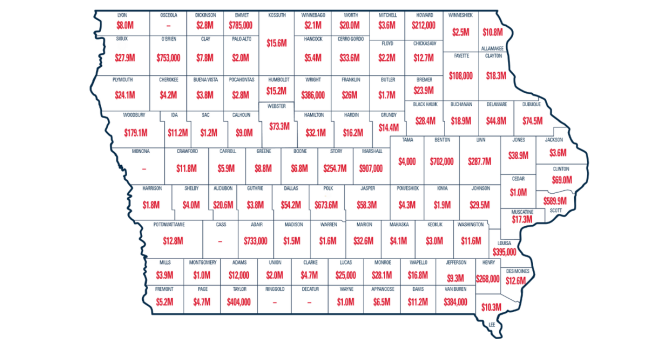The amount of meat soaked up by China from the global market in the last two years has been unprecedented. During the first 10 months of 2019, Australian beef exports have increased 75% year-on-year, while lamb and mutton have jumped 32% and 52%, respectively. China will finish 2019 as Australia’s largest beef and sheepmeat export market. This growth has been underway for a number of years, as an emerging class of affluent consumer’s increasingly demand quality meat, but has been supercharged by the significant hole African Swine Fever (ASF) has left in China’s domestic pork production.
Australia has not been alone in this pivot, with New Zealand sheepmeat and South American beef recording equally massive export growth to China over the last year. However, meat production systems cannot adapt quickly enough, constrained by biology and resources, to keep pace with China’s insatiable appetite. Hence, some export markets have born the brunt of buying competition from China. As discussed recently, the imported US manufacturing beef market has come under significant buying pressure from China, but it has not been alone.
China drawing in range of beef cuts
Australian beef exports increased 7% year-on-year in the first ten months of 2019, supported by elevated drought-induced female slaughter and near-record numbers being finished on grain. However, to account for the huge growth in trade to China, a range of high and low value cuts have also shifted market.
Interestingly, manufacturing beef exports have only increased 1% so far this year – at odds with the rest of the trade and the elevated cow slaughter – indicating that many secondary primal cuts are being directed to China instead of ending up in manufacturing combos. While an extra 20,500 tonnes swt of manufacturing beef has gone to China so far this year, hindquarter cuts – particularly shin, knuckles and outsides – have expanded by 35,000 tonnes swt. Much of this growth has come from reduced shipments to the Philippines, Japan, Indonesia and Canada, which together have received 27,000 tonnes swt less of Australian manufacturing beef this year. Meanwhile, Japan (mostly thin flank), Korea (shin and topside) and the US (topside, think flank and outside) have received 10,000 tonnes swt less of hindquarter cuts between them over the same period.
Loin and forequarter exports to China have grown but to a lesser extent than manufacturing and hindquarter cuts, reflecting the price-sensitive nature of the market and suggesting beef growth is offsetting the disappearance of cheaper pork across some channels.
Forequarter cuts to China have mostly been directed from product previously destined for Japan (particularly grainfed brisket) and Korea (grassfed brisket and blade), which have received 11,000 tonnes swt less of forequarter cuts between them. Striploins and cube rolls have seen the greatest growth to China of the sweet cuts, at the expense of reduced grassfed cube rolls shipped to Taiwan and grassfed striploins to the EU. Exports to Japan and Korea have both registered falls in grainfed striploins and cube rolls.
While Japan and Korea have seen some cuts bear witness to buying pressure from China, they both remain critically valuable markets for Australia. Japan, in particular, is still Australia’s largest grainfed beef market – twice that of China – with long-established relationships and strong consumer recognition of Australian beef. Moreover, both grassfed and grainfed Australian beef exports to Japan are above where they were just three years ago. Shipments to Korea, meanwhile, have been restricted by the triggering of safeguard in October, with certain cuts switching across to China primarily from September.
Smallstock record big stock shift
Lamb has been less affected by the draw of China, with export growth recorded across most major export markets so far in 2019. Iran was the only notable country to record a marked decline in lamb imports from Australia but that was driven by removal of currency subsidies and access to finance – following the reimposition of US sanctions – as opposed to strong demand from China.
Mutton exports, however, have declined across nearly all markets bar China, including the US, Saudi Arabia, the UAE, Kuwait and Malaysia, compounded further by reduced sheep slaughter from July through to September. Carcase, leg and breast and flap remain the primary mutton items destined for China, with the greatest volume being redirected from frozen mutton carcases previously exported to the Middle East.
Goatmeat exports, a niche product targeting the US ethnic market, has not registered any trade redirection on account of China.
Australia still more diversified than most
While China has been the largest growth market of 2019, Australia still maintains a relatively diversified export portfolio. So far this year, China has accounted for 23% and 32% of Australia’s beef and sheepmeat exports, respectively. In 2016, the US and Japan both had a slightly higher share of beef exports, at 25% a piece.
In contrast, New Zealand has sent 46% and 53% of their beef and sheepmeat exports, respectively, to China so far in 2019. Brazil’s beef export share to China, inclusive of Hong Kong, so far this year is 41%, while Argentina (75%) and Uruguay (69%) are even more highly geared towards the market.
Australia, at the end of the day, cannot feed the growing appetite of China alone, let alone fill the gap left in the wake of ASF. Finding the most suitable customer for each red meat product across a diversified array of markets will continue to drive the value of Australian exports – not simply chasing one single market. However, the buying power of China and the impact of ASF will continue to be a key theme cutting across all global meat markets in 2020.








